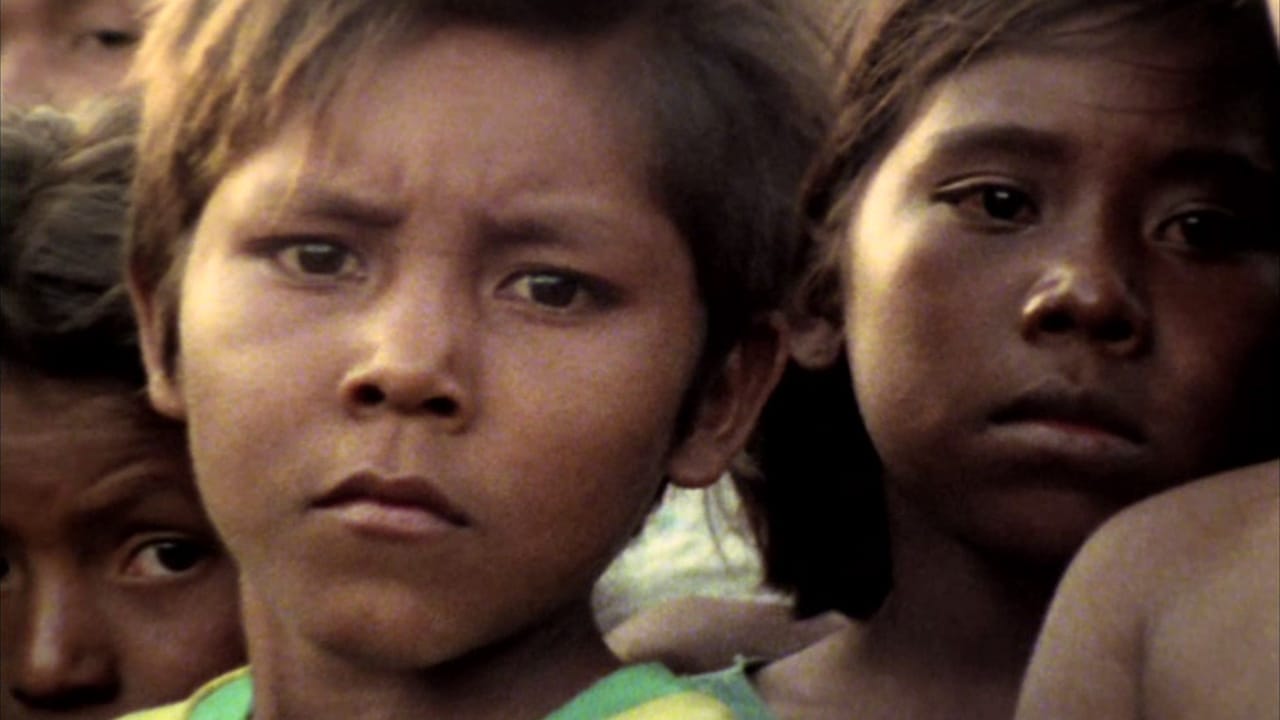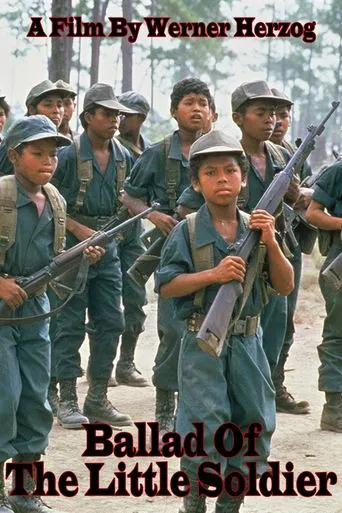

I like the storyline of this show,it attract me so much
... View MoreVery very predictable, including the post credit scene !!!
... View MoreIt's a good bad... and worth a popcorn matinée. While it's easy to lament what could have been...
... View MoreIt really made me laugh, but for some moments I was tearing up because I could relate so much.
... View MoreThis is a powerful, 40 minute long documentary about child soldiers fighting for an Indian tribe known as the Miskitos against a communist enemy. In the first half there are interviews, which are quite painful to watch, with people in the tribe who've seen awful events such as their children being killed before their own eyes because of the enemy.The second half manages to be equally upsetting, painful, and disturbing, as Werner Herzog documents the child soldiers, preparing to go to war. The fact that such young children are going through such difficulties is greatly upsetting, and this film manages to be VERY powerful. However, at only 40 minutes, it STILL seems to need some editing! With such a short runtime, it feels quite long!Although there's some flaws, it is pretty great and pretty emotional. If you're into more disturbing documentaries, this is one you have to see!
... View More"It is an illusion that youth is happy, an illusion of those who have lost it; but the young know they are wretched for they are full of the truthless ideals which have been instilled into them, and each time they come in contact with the real, they are bruised and wounded." --W. Somerset Maugham.Werner Herzog's 45 minute documentary succinctly captures the reality of this achingly honest quote from W. Somerset Maugham. One moment in particular hammers it home. From an eager distance, Herzog's camera watches as a hired instructor bellows quick commands and warnings to cherubic soldiers waiting in line to test out a mortar. We can see down the line as each face reveals itself from behind the comrade's head in front of them. We see, despite the violent circumstances and the impoverished economic situation of those soldiers, delighted white marbles smiles and we recognize in that moment the happy-go-lucky face of childhood. We know, from our own experiences of childhood, from within and from observation, that these children cannot possibly grasp the full extent of their presence, right there in that field, dressed in scroungy uniforms and preparing for the use of weapons, no less. They only know that, as soon as their turn comes, they will get to operate an explosive weapon and behold its trajectory and its landing without the added screaming and carnage of battle.What eventually happens is devastating. In one of the many shots capturing pairs of mortar operators, an extremely young soldier, perhaps only 7 or 8, is fumbling with the shell as his comrade holds the cylinder upright. The shell refuses to slide with ease down the tunnel of the mortar and there's an uneasy few seconds where you're certain something is going to go wrong, particularly when the instructor only minutes earlier warned the young soldiers about the dangerously sensitive fuses on the mortar. Instead of facilitating the situation safely, the instructor gives the little boy an adult sized wallop on the shoulder. The shell eventually finds its way down the tunnel, shooting right back out with a soft pop and a cloud of smoke. Immediately afterward the instructor gives the hesitant child soldier yet another wallop before the child soldier and his comrade go to the line where the soldiers who already shot a mortar round wait for further instructions.In the moment of preparing that shell, Herzog closes in on that child soldier's face. In the blink of an eye we see that child's face go from eager anticipation to one of absolute despondency. What's terrifying is that this despondency arises not out of the child's realization that he just participated in the testing of a deadly weapon, but out of a reprimand from an older soldier. In this moment we see just how attentive those little ears, how expectant those little eyes, and how heartbroken those little bodies are. They, like all children (despite rough exteriors in some), are little followers, wanting only to please their instructors (both military and family) and be good sons and brothers. Their leaders, the hired instructors who teach the boys to shoot, march and stomp, are would-be older brothers. The tragedy is that in reality they turn out to be nothing more than enforcers of code whose necessity is only explained in terms of vengeance. When Herzog asks a child soldier why he wants to kill other little boys, the child soldier responds with something to the effect of, "They killed my mother and my brother and now I want to kill." These boys can only understand (and then still so very poorly) war in terms of schoolyard conceptions of an eye-for-an-eye and being brave. They are vulnerable, and, in one instructor's words, "pure" and ready to accept training with an "uncorrupted" (here meaning "unquestioningly willing") constitution. We thought we knew what it meant for a soldier to be called "fodder" but we don't really know until we see Herzog's close ups of the child soldiers in formation with instructors standing by and basically advertising their worth as killing machines. And if this fails to disturb us, then Denis Reichle's (co-director) postulations on the situation will. From behind the formation he looks down on the backs of the heads of the child soldiers. Turning away from them and looking off to the distance, Reichle tells us that this experience is too much for him because when he was only 11 he was recruited to fight for the Nazi's in their last hold over Berlin. "A lot of us died," Reichle says, "and it's hard not to see these children as already dead." He is right to say this because, in so many ways, these children ARE already dead. Their youths have been robbed from them, much more prematurely than we in privileged societies know and understand. Their parents, their siblings, their friends have been robbed from them. Their sense of safety in their homeland has been robbed from them. And just like the village woman with a ransacked house that Herzog interviews, they have been robbed of damn near everything except their fragile, saddened lives.Herzog conveys all of this so simply and without affectation. The result is a deeply disturbing and wholly necessary film that tells a classic story (the stealing of youth by war and other destructive adult activities) in a singularly devastating way. You won't be the same after seeing it.
... View MoreFor 'Ballad of the little soldier',Werner Herzog worked with Denis Reichle who fought against the Russian army.There is a brief description of him talking about what he experienced as a child soldier.The film gains its force through the portrayal of young children who have been employed as soldiers by Miskito Indians who fight against Sandinistas.During the course of talks with these child soldiers,it is revealed that many of them chose to take up arms in order to avenge their family members who were killed by Sandinistas.Watching small children learning to shoot guns,one is reminded of the role weapons play in killing even innocent souls who ought to go to school or play.It has been exactly three decades since documentary film 'Ballad of the little soldier' was made by Werner Herzog in 1984.It is hailed as one of the most important works of cinema about the use of children as soldiers.This film has not at all lost its relevance as there are still numerous wars being waged in different parts of the world where children are involved as little soldiers.
... View MoreThose who remember Sandinistas and Ollie North should see Herzog's brutal interviews with 11-13 year old indigenous Nicaraguan Contras. Watching these children squirm when asked a question that the pat phrases that had been drilled into their heads will not suffice, is poignant. There is no letup. They keep looking to their CIA trained handlers, who stand over their shoulders, when asked what that phrase means. Germans remember the Hitler Youth, and the lies they swallowed and repeated in such cute sounding slogans about whose meaning they had no clue. This movie is a tribute to all those children that, according to UNESCO, are being forced to fight wars at ever younger ages in ever larger numbers.
... View More